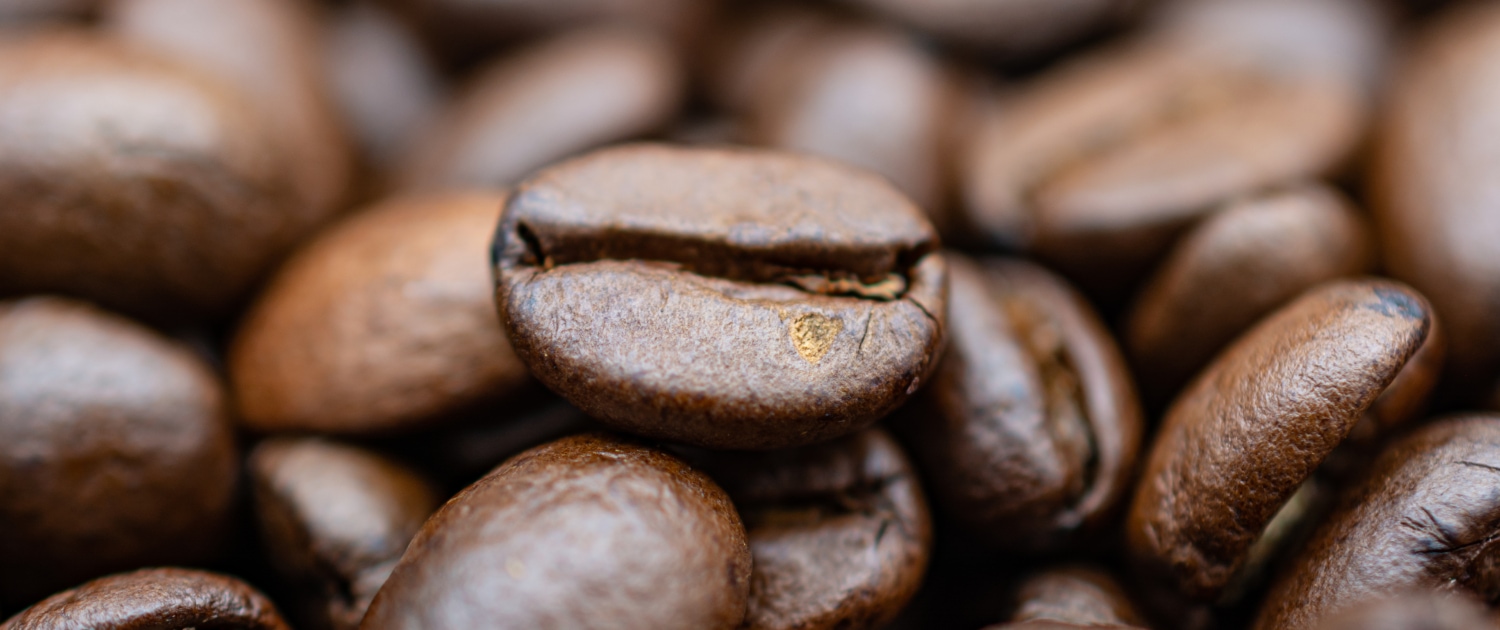What is Arabica Coffee?
–Top 10 Arabica vs. Robusta Differences –
When you are a coffee drinker, you have heard the term many times already.
Arabica coffee is the world’s most popular type of coffee.
But why does it matter, if your coffee is Arabica, Robusta or even Liberica?
Is there really any significant difference between any of these variations?
I mean, coffee is just coffee, right?
Well, not exactly.
Unfortunately, the answer is not that simple, once you get more into detail. In fact, there is a large variety of different coffee plants out there.
Each one of these coffee variations emphasizes unique flavor profiles on its own.
But there is one coffee type, which tops them all.
Arabica coffee beans are the most consumed ones out there. Often, they are compared to the second biggest coffee player, the Robusta coffee beans.
Let’s find out what makes Arabica coffee beans so special.
In addition, we will also have a look at the Top 10 Arabica versus Robusta differences.
What is Arabica Coffee?
Arabica coffee was the first commercially produced species.
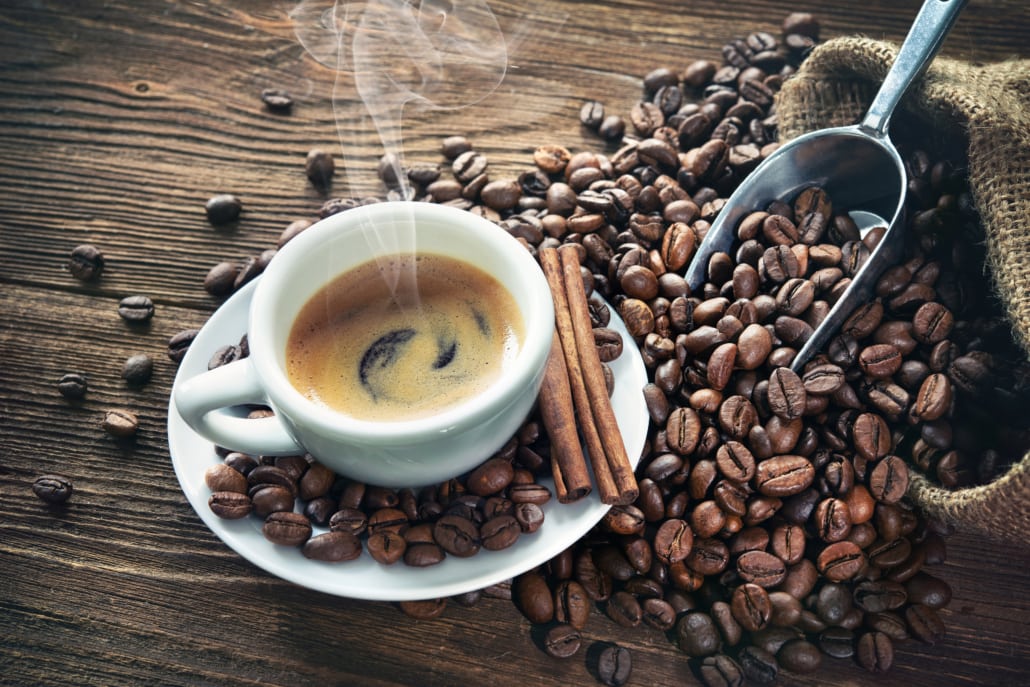
Over the years, it became the most popular coffee bean type.
Coffee lovers consider the Arabica blend to be the ‘gold standard’. Especially, when it comes to capturing the rich flavors of coffee. Which we all appreciate so much.
Typically, every Arabica coffee cup is beautifully fragrant in its flavor. On top, you can taste fruity and chocolatey flavor tones as well.
If we compare it to other coffee origins, such as Robusta or Liberica. Usually, these subtle flavors and fragrances just don’t tend to come as naturally.
Originally, the first Arabica coffee beans came from the highlands of Ethiopia.
In these higher altitudes, its coffee cherries were naturally protected from extreme sunlight through dense forests.
Technically, the Arabica coffee beans belong to the species Coffea.
Nowadays, Arabica coffee beans represent about 60% of the entire global production.
Its original wild plants naturally grow between 9 to 12 meters tall (30 to 39 ft). The plants have a so-called open branching system.
This means that leaves are situated opposite to each other. Their shape is simple elliptic-ovate to oblong.
If you take a rectangle or a circle and stretch it out. You end up with an elongated shape called an oblong. Or, you stretch a circle until it becomes an oval. Then, you’ve made it oblong.
Mostly, the leaves bear a glossy dark green color. And, its flowers are white and grow in axillary clusters. This means that flowers grown straight from the main branches.
Arabica coffee beans are actually plant seeds, which are inside coffee cherries. And, these cherries are typically bright red to purple, when they are ripe.
Normally, each coffee cherry contains two seeds.
These are the eventual coffee beans then.
Why is it Called ‘Arabica’ Coffee?
The first people to use the coffee beans were from the Oromo tribe.
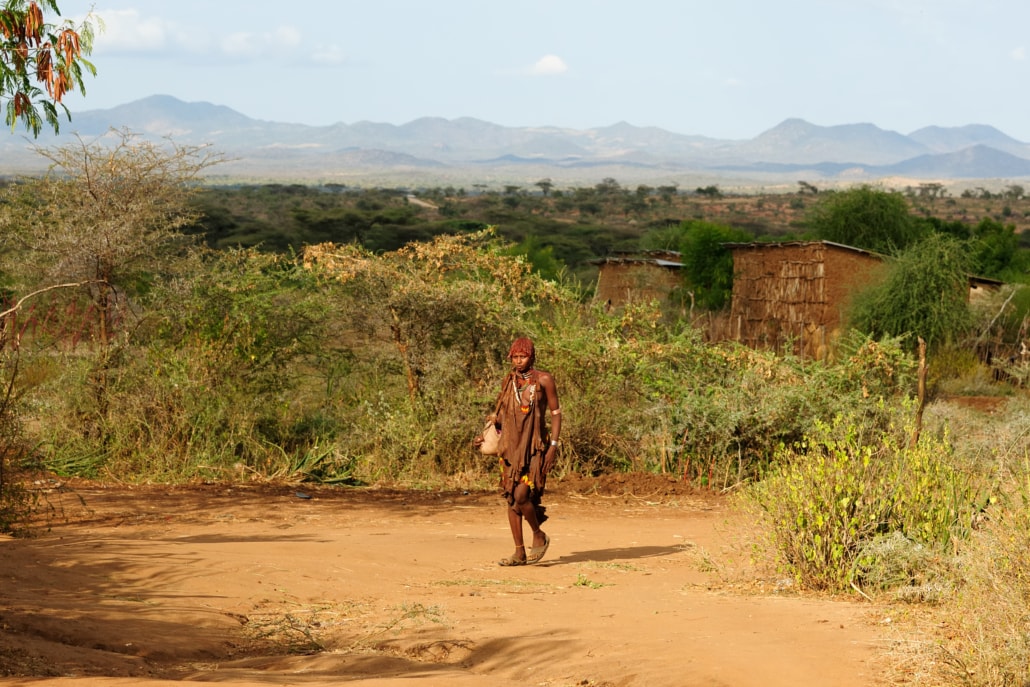
They are the largest ethnic group in Ethiopia. In the beginning, the Oromo people started crushing and mixing the first beans with fat.
Travelers or workers then ate them as a stimulant to stay alert and active.
However, the actual name has a different birthplace.
It is called ‘Arabica’, because in the 7th century the first beans were brought from Ethiopia to lower Arabia in Yemen.
The term ‘Arabica’ directly refers to this region. The first coffee was brewed and commercially consumed there.
Arab scholars also kept first historical records of the Arabica coffee and its benefits. They documented that it helped them prolong their work hours.
From there, the coffee drink continuously spread around the entire world.
Technically speaking, experts call the coffee type Coffea Arabica.
Furthermore, other common names are Arabian coffee or mountain coffee.
How Does Arabica Coffee Taste Like?
Typically, the coffee type has a slightly sweet flavor.

In addition, you can also taste hints of chocolate, nuts and caramel. Even further, you may also notice flavor notes of fruit and berries.
You will also experience a pleasant acidity when drinking your coffee. And, there will be a little bitterness as well.
Many coffee enthusiasts also recommend trying out cold brew coffee as coffee making alternative to regular coffee.
The increasingly popular brewing method can help bringing out the sweet flavors even more.
Moreover, the choice of roast level will also play an important role.
It affects to which degree you will notice the flavors.
Other factors are the area and soil composition, where the beans are grown in. These environmental conditions can also affect the balance of the overall flavor profile.
If you store your Arabica coffee beans properly at home. They will stay fresh and rich in flavor much longer.
Most of the coffee beans you see at coffee shops, restaurants or supermarkets are of the Arabica type.
Some brands will produce and offer a mix of coffee types. The most common mix is with Arabica and Robusta beans, especially in espresso blends.
If you are also looking for the best coffee taste results at home. You should probably choose an Arabica coffee blend as well.
How do we Grow Arabica Coffee?
In general, the Arabica coffee plant does not like harsh climates very much.
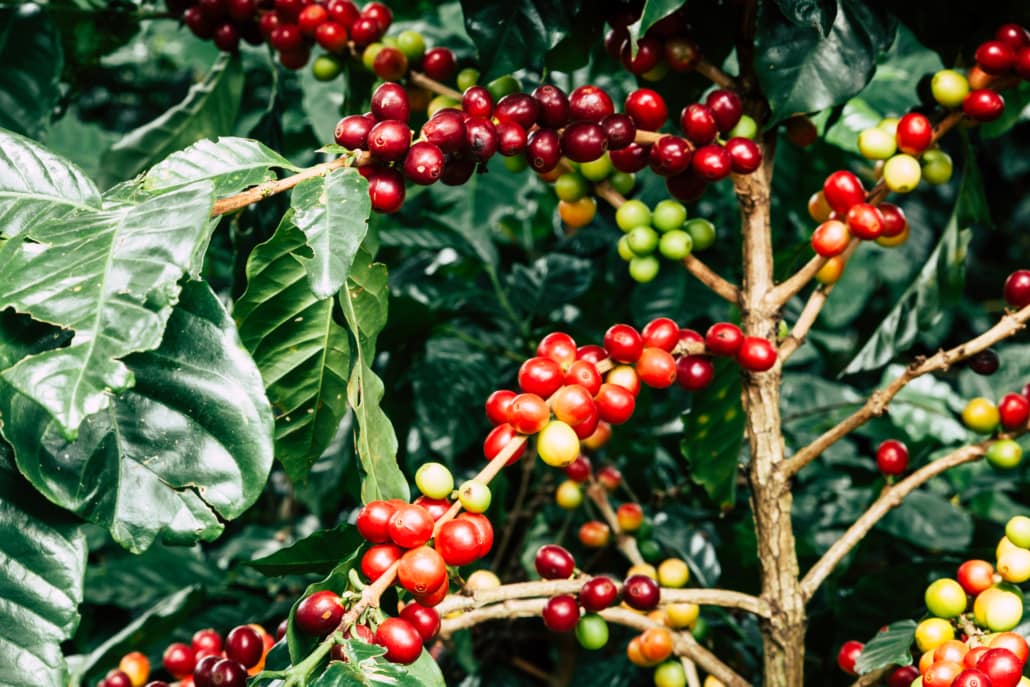
Its coffee cherries cannot really handle frost that well. Naturally, they best grow in humid and tropical to subtropical climate zones.
Average temperatures between 15 to 24 Celcius (59 to 75 Fahrenheit) are ideal. In addition, the plants develop the best if they are grown in the shade on hillsides.
Altitudes around 600 meters (1.900 feet) above sea level and more bring out the best results.
Furthermore, it takes up to 7 years until the coffee plant bears first fruit.
In the wild, the plant can grow around 9 to 12 meters. Commercially harvested plants usually have a height of 5 meters.
But the majority of commercial coffee plants will be even kept around 2 meters. Because it is much easier and more efficient to thoroughly harvest them then.
As already mentioned, the flowers are small and white. They smell and look like jasmine flowers, sweet and pretty.
The Arabica coffee beans themselves are safely resting inside the fruit cherries.
When the cherries turn to either dark red or dark purple. They are ready for harvest.
Commonly, not all coffee berries ripen at the same time.
That’s why it is best to pick coffee berries by hand. Trained eyes from skilled farm workers can easily spot berries which are good to be processed.
Or, if others still need more time to fully develop their flavor potential.
They will leave and pick them off later.
Where Can we Find Arabica Coffee?
As we learned already, we can mostly find Arabica coffee in tropical climates around the equator.
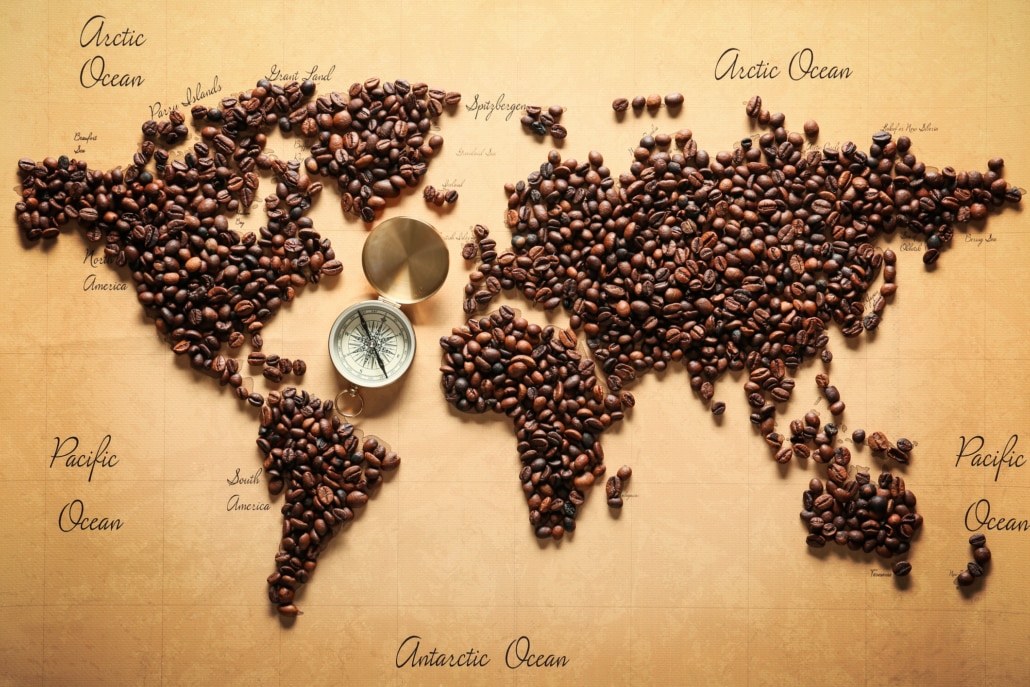
Some of the best varieties come from South America and Africa. But there are also very popular Arabica coffee types in especially South East Asia.
The most notable countries would be Indonesia, Vietnam and also Thailand in this region.
Of course, Thailand, the land of smiles, is our home place. So, this is from where we are proudly producing our very own coffee.
Besides, countries like Costa Rica, Mexico and Guatemala also grow high quality Arabica. Other nations include Ecuador, Colombia, Ethiopia, Burundi, Brazil, Rwanda and India.
Overall, Brazil is the largest producer of Arabica coffee in the world.
What Different Arabica Coffee Types Are There?
In total, the Arabica coffee bean has a large family.
Dozens of varieties are cultivated from it. Some of the varieties are especially unique. As they come from very specific coffee-growing regions.
While other varieties are grown in various different parts of the world.
Here is a list of some of the most common Arabica types.
You have probably heard of some of them already.
-
Typica
The Typica is considered to be one of first coffee varieties. These days, many other varieties originate from the Typica.
People appreciate the Typica for its clean and sweet cup. Most of the below types are results of cross-breeding with the Typica plant.
-
Bourbon
Besides Typica, the Bourbon is also one of the original coffee varieties. The name may suggest a well-known alcoholic beverage. But in this case, it is actually pronounced ‘Bor-BONN’.
Its flavor has chocolatey notes with fruity undertones. Again, many newer Arabica varieties are products of cross-breeding with the Bourbon plant.
In fact, all of the below mentioned varieties either feature Typica or Bourbon trademarks as well.
-
Caturra
The Caturra is a natural hybrid of the Bourbon strain. People found it in the inner Brazilian jungle regions in the early 1900s.
However, now, it is mostly grown in higher altitudes in Cenral America. It simply flourishes better there. Coffee drinkers appreciate its rather light body with a distinct citric flavor.
-
Gesha
This coffee type originates from the town of Gesha in Ethiopia. From here, it then was imported to Panama, from where it quickly rose to popularity.
Thanks to the high altitudes in the Central American tropics, the Gesha variety does achieve a very unique and delicate taste. It additionally undertones fruity, jasmine and honey flavors.
The coffee type is also sometimes called Geisha. Nowadays, it is one of the most expensive coffee types worldwide.
-
Jamaican Blue Mountain
Our next popular Arabica bean comes from Jamaica. As the name already indicates as well, it is named after a certain mountainous region.
In addition, you can also find the same type on many Hawaiian coffee plantations.
Coffee enthusiasts enjoy its light body, creamy-smooth mouthfeel and mild flavor. Remarkably, it just offers enough sweetness itself already. So, you don’t need to necessarily add any sugar or cream.
- Jember
The Jember coffee bean directly originates from the Typica type. Coffee farmers throughout Indonesia widely cultivate and produce it.
Coffee drinkers describe it having a heavy body and rich, buttery mouthfeel. On top, there are flavors of sweetness similar to brown sugar and caramel.
-
Kona
Here comes another of the world’s most expensive coffee varieties. This is mainly due to the very unique location where this coffee is growing at.
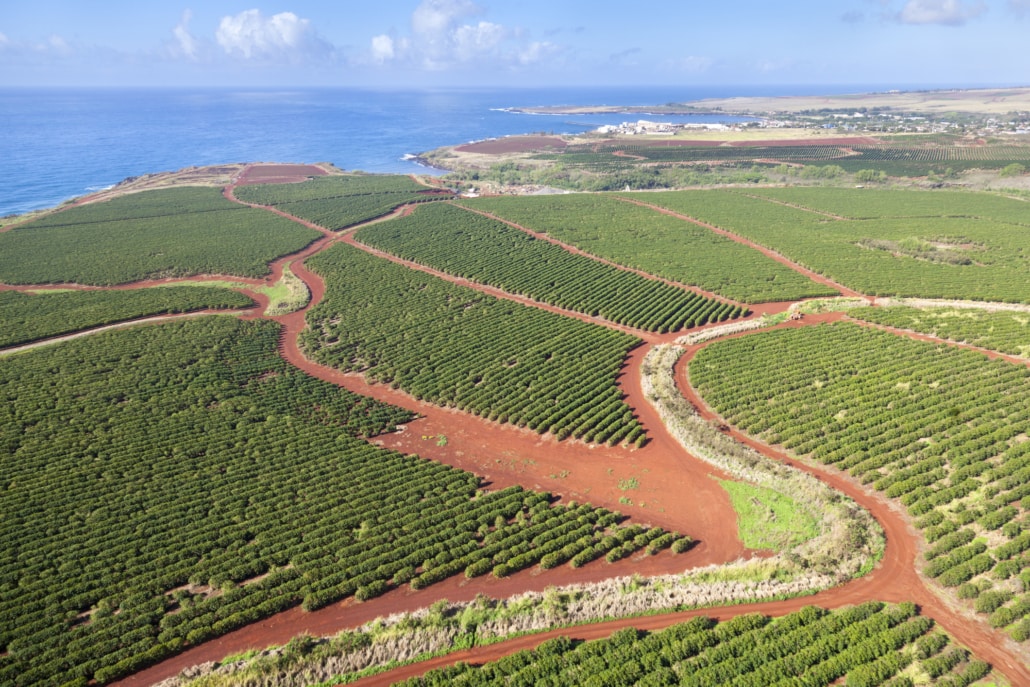
Hawaiian coffee farmers exclusively produce it on the slopes of two volcanoes. These volcanoes are Mauna Loa and Hualalai in the North and South Kona districts of the big island.
Kona coffee is famous for its excellent flavor profile. This is mainly thanks to the rare combination of its unique climate, altitude and especially the rich lava soil.
It has a light body. And, Kona coffee is naturally sweet with a fruity flavor. In addition, you can taste hints of spices and nuts.
-
Mundo Novo
The Mundo Novo variety is a natural hybrid between Bourbon and Typica from Brazil. Coffee experts also often use it as base for other popular varieties.
Its own taste is slightly bitter, with a hint of caramel sweetness.
-
Pacamara
Our next famous variety is a direct offspring of the Pacas and Maragogype beans. Pacarama comes from Central America, especially from the mountainous regions of El Salvador.
The coffee is much appreciated for it fine balance of sweet acidity and floral flavors.
-
Villabolos
Last but certainly not least, we are moving on to one of Costa Rica’s most famous coffee types. The coffee plant is pretty robust and even thrives in pool soil.
It presents a pleasing balance of lively acidity and sweetness. You will find it just sweet enough in itself already. Hence, there is no real need to add any more sugar or cream.
Other common Arabica types are Catimor, Catuai and Jackson. In addition, there are the variations of Maragogype, Mocca, Pacas, Pache and Villa Sarchi.
Arabica vs. Robusta
As the learned already, the Arabica and Robusta coffee types clearly dominate our today’s coffee market worldwide.
But what exactly makes one or the other better?
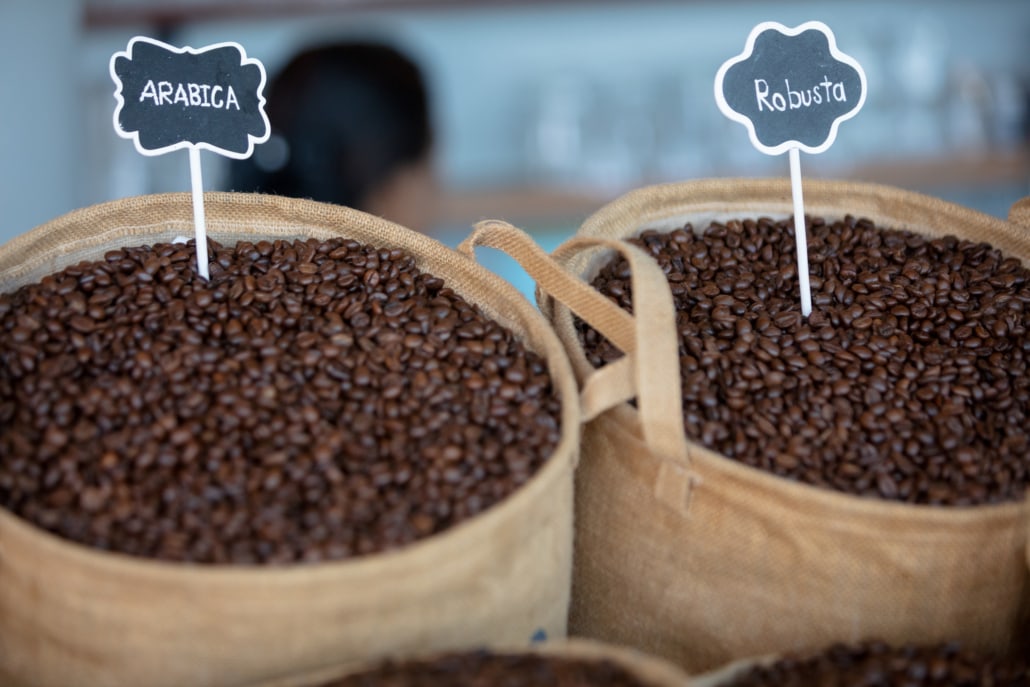
Let’s have a look at some of the most notable differences.
Top 10 Arabica vs. Robusta Differences
-
Caffeine
Arabica coffee has less caffeine than Robusta.
In fact, the Arabica coffee bean contains about 1.5% caffeine of its entire body content. Robusta carries a natural total of 2.7%.
Some coffee consumers are more sensitive to caffeine than others. Therefore, these people are especially concerned about the caffeine side effects of too much caffeine.
Overall, the Arabica coffee bean would be a better choice then.
Caffeine generally also has a natural bitter flavor. With Arabica containing less caffeine, this automatically makes it also less bitter than Robusta.
-
Sugar
Arabica coffee contains more sugar than Robusta.
As a matter of fact, Arabica has almost twice as much sugar as Robusta.
This difference is probably one of the main reasons why Arabica is more popular. Typically, the majority of people prefer sweet over bitter flavors.
-
Lipids
Arabica coffee contains more lipids than Robusta.
The lipids are a family of organic compounds. They are mostly insoluble in water. Fats, oils, waxes, certain vitamins and hormones are contained in lipids.
These are molecules that yield high energy. In total, there are around 60% more lipids in Arabica coffee.
-
Acidity
Arabica flavor has higher acidity than Robusta.
You can compare it to the amount of acidity that makes wine taste good. The higher concentration of acidity adds chocolatey and fruity flavors to the Arabica coffee bean.
On the other hand, the Robusta coffee bean is lower in this quality. That is why the Robusta’s flavor is commonly described as being woody or burnt rubber.
-
Popularity
Arabica coffee is more popular than Robusta.
Overall, Arabica makes up 60% to 75% of the entire coffee production in the world. Robusta more or less covers the entire remaining market share.
-
Flavor
Arabica coffee has a more pleasant flavor than Robusta.
Typically, coffee consumers describe the Arabica’s flavor as being rich overall. In addition, you can taste hints of chocolate, nuts, fruits and berries.
Robusta on the other hand tastes rather bitter, earthy and rubbery.
-
Prize
Arabica coffee is more expensive than Robusta.
There are several factors for the prize difference. For example, Arabica is more difficult to successfully cultivate. It is more sensitive to the environment and therefore requires more care and caution.
Additionally, it also produces fewer coffee beans per hectare than Robusta.
And, the fact that it tastes better also makes its market demand higher. Robusta is a bit less popular, cheaper to produce in a higher volume. Hence, its prize is lower.
-
Fragility
Arabica coffee is more fragile than Robusta.
Naturally, the Arabica coffee bean prefers a consistent climate without any harsh changes. Ideal average temperatures are between 15 to 24 degrees of Celcius (59 to 75 Fahrenheit).
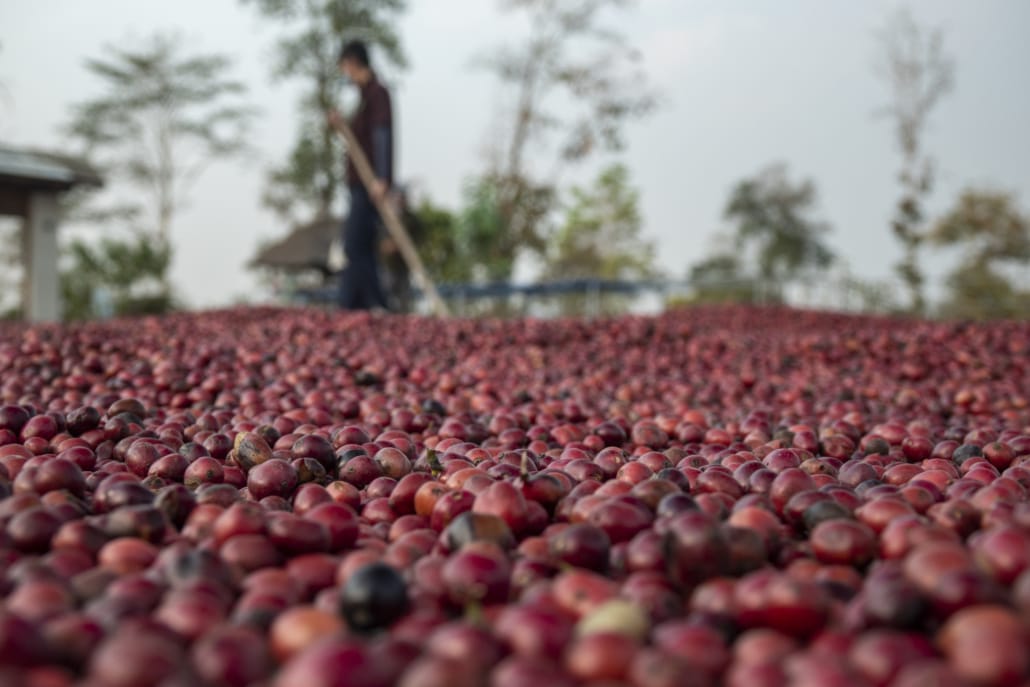
Whereas, Robusta is more heat resistant. Average temperatures are between 18 to 36 degrees of Celcius. In addition, Robusta coffee plants can also better handle climate changes.
Furthermore, humid and shady climate is the best for Arabica. But the Robusta can also handle more direct sunlight and more drastic changes in rainfall.
Arabica usually grows at higher altitudes. And, the beans take longer to mature which actually adds to its full flavor, eventually.
Also, the beans are more vulnerable to damage by pests than Robusta.
-
Shape
Arabica coffee beans are shaped and colored differently than Robusta.
Naturally, the Arabica bean is a bit larger with an oval shape. Robusta beans are usually rounder in shape.
Both coffee types also differ in color. The raw Arabica bean is commonly lighter in color than the Robusta bean.
-
Production
Arabica produces less per year than Robusta.
If you go hectare by hectare, Arabica coffee plants produce less per year. On average, coffee farmers reach higher yields with Robusta coffee plants instead.
As a result and with lower outcome, this makes Arabica more expensive to grow.
-
Smell
There is one last point, which I would like to mention as well.
Arabica beans smell different than Robusta.
In fact, the Arabica coffee bean smells a bit like blueberries. This is the case before they are roasted, of course.
Depending on the degree of roast level, many natural flavors and characteristics can fade away.
Robusta coffee beans naturally smell kind of like peanuts instead.
Which One is Better?
This may be an unfair question for both the Arabica and Robusta coffee.
If we would simply go with the most popular and general public opinion, Arabica is the better one.
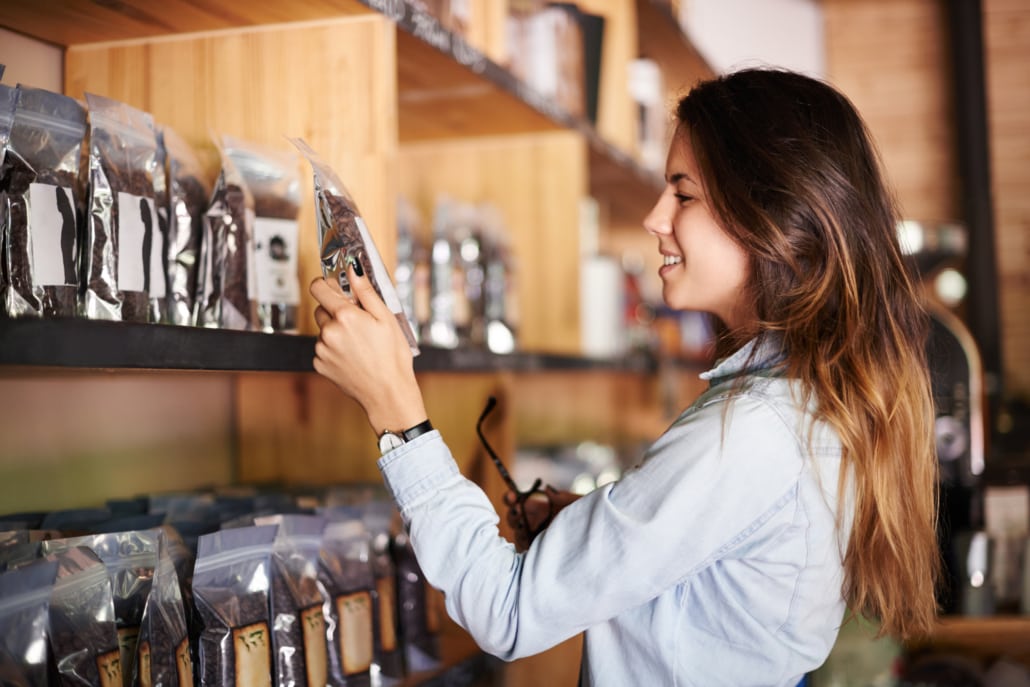
However, there is also high-quality Robusta coffee available. Many coffee lovers argue that it is equally as nice and pleasant in flavor.
In the past and even until today, a lot of instant coffee is made from Robusta coffee. That is also why Robusta has a somewhat bad reputation for many coffee drinkers.
Before, instant coffee was mostly poorer in taste than regular coffee.
But there have also been improvements in the world of instant coffee lately. Many producers use Arabica coffee for instant coffee as well, now.
This has also dramatically increased the flavor of instant coffee.
However, at the end of day, it depends on us.
Which taste do we personally prefer the most?
If you like a more bitter, rubbery favor. Then Robusta will probably be your favorite choice. Arabica does highlight sweeter, chocolatey and less acidic flavors instead.
What about caffeine?
Well, if you are looking for a good caffeine punch, Robusta is the clear winner. It simply contains more caffeine.
As you can see, it eventually depends on our very own preferences.
But this is also exactly what makes our coffee universe so beautiful. At least, that’s my opinion.
It magically connects us all, one way or the other.
Thanks to its rich and colorful variety of types and drinks all over the world. We can creatively find and express our own coffee desires.
Benefits of Arabica Coffee
There are over a hundred different species of coffee out there. They all come with their own benefits.
In general, coffee has many great health benefits. Many coffee lovers and experts even argue that coffee makes us happier and live longer.
Here are some of the main benefits of Arabica coffee. You can also find the same benefits in many other coffee types.
- It is rich in antioxidants.
- Arabica contains caffeine. It helps us to stay alert and focused.
- The raw coffee type is low in calories. Usually, people also add less milk or sugar to it. Because of its natural sweeter taste.
- Its beans contain small amounts of vitamins and minerals. These include niacin, magnesium, riboflavin, manganese and potassium.
- Arabica may help you stay hydrated. Because its coffee beans consist of 95% water themselves already.
- It may help protect your skin. You can find it in many skin care products, like moisturizers.
- Lastly, the coffee is simply delicious and gives us comforting feelings.
Final Arabica Coffee Thoughts
There are many good reasons why the Arabica coffee is the most popular type in the world.
Its sweet flavor, higher quality and various benefits make it ideal for many of us.
How about you?
Do you maybe have any favorite Arabica coffee type? What is the main reason why you are choosing Arabica coffee?
Or, is it rather Robusta coffee for you?
Feel free to share your favorite and most memorable Arabica experiences with us.
Until then, stay safe, healthy and properly caffeinated.
Cheers!
Related Posts
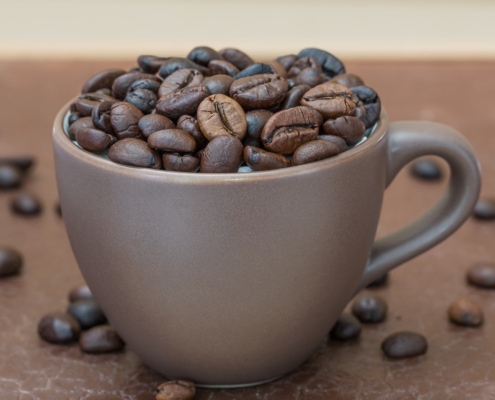 https://www.siamhillscoffee.com/wp-content/uploads/What-is-Liberica-Coffee-–-The-Worlds-Rarest-Coffee-Type-–-1.jpg
1384
2165
Siamhillscoffee
https://www.siamhillscoffee.com/wp-content/uploads/coffee-logo.png
Siamhillscoffee2021-04-25 11:33:222021-04-25 11:33:22What is Liberica Coffee – The World’s Rarest Coffee Type –
https://www.siamhillscoffee.com/wp-content/uploads/What-is-Liberica-Coffee-–-The-Worlds-Rarest-Coffee-Type-–-1.jpg
1384
2165
Siamhillscoffee
https://www.siamhillscoffee.com/wp-content/uploads/coffee-logo.png
Siamhillscoffee2021-04-25 11:33:222021-04-25 11:33:22What is Liberica Coffee – The World’s Rarest Coffee Type –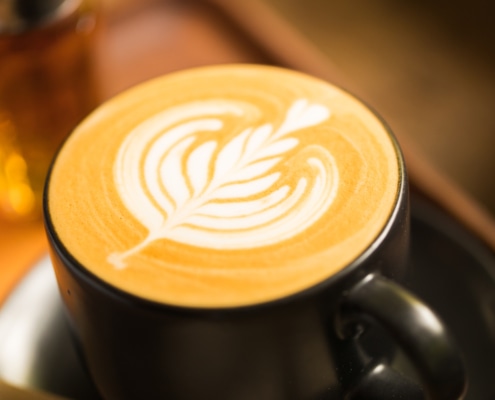 https://www.siamhillscoffee.com/wp-content/uploads/What-is-Latte-Art-–-Its-Fundamentals-History-and-Techniques-–-1.jpg
1414
2121
Siamhillscoffee
https://www.siamhillscoffee.com/wp-content/uploads/coffee-logo.png
Siamhillscoffee2021-04-25 11:28:272021-04-25 11:28:27What is Latte Art – Its Fundamentals, History and Techniques –
https://www.siamhillscoffee.com/wp-content/uploads/What-is-Latte-Art-–-Its-Fundamentals-History-and-Techniques-–-1.jpg
1414
2121
Siamhillscoffee
https://www.siamhillscoffee.com/wp-content/uploads/coffee-logo.png
Siamhillscoffee2021-04-25 11:28:272021-04-25 11:28:27What is Latte Art – Its Fundamentals, History and Techniques –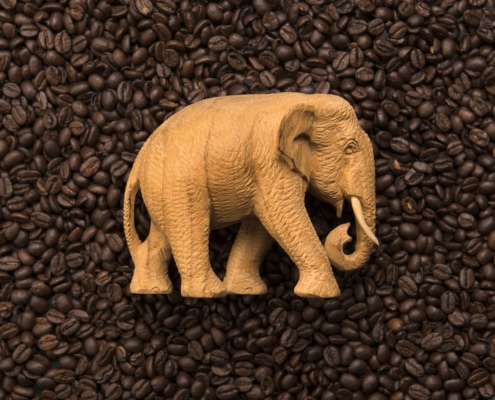 https://www.siamhillscoffee.com/wp-content/uploads/Elephant-coffee-–-The-new-luxury-coffee-–-How-great-is-it-1.jpg
1445
2075
Siamhillscoffee
https://www.siamhillscoffee.com/wp-content/uploads/coffee-logo.png
Siamhillscoffee2021-04-25 11:23:422021-04-25 11:23:42Elephant coffee – The new luxury coffee – How great is it?
https://www.siamhillscoffee.com/wp-content/uploads/Elephant-coffee-–-The-new-luxury-coffee-–-How-great-is-it-1.jpg
1445
2075
Siamhillscoffee
https://www.siamhillscoffee.com/wp-content/uploads/coffee-logo.png
Siamhillscoffee2021-04-25 11:23:422021-04-25 11:23:42Elephant coffee – The new luxury coffee – How great is it?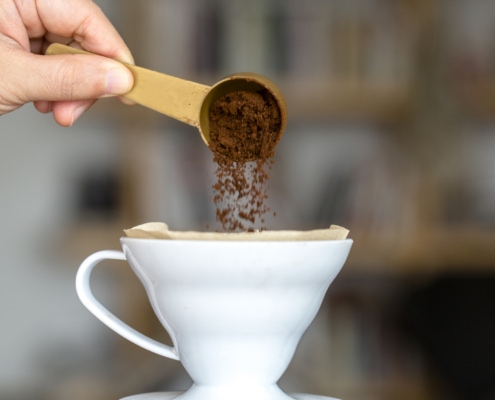 https://www.siamhillscoffee.com/wp-content/uploads/Filter-Coffee-and-Instant-Coffee-–-Whats-the-Difference-–-1.jpg
1414
2121
Siamhillscoffee
https://www.siamhillscoffee.com/wp-content/uploads/coffee-logo.png
Siamhillscoffee2021-04-25 11:15:412021-04-25 11:15:41Filter Coffee and Instant Coffee – What’s the Difference? –
https://www.siamhillscoffee.com/wp-content/uploads/Filter-Coffee-and-Instant-Coffee-–-Whats-the-Difference-–-1.jpg
1414
2121
Siamhillscoffee
https://www.siamhillscoffee.com/wp-content/uploads/coffee-logo.png
Siamhillscoffee2021-04-25 11:15:412021-04-25 11:15:41Filter Coffee and Instant Coffee – What’s the Difference? – https://www.siamhillscoffee.com/wp-content/uploads/Cappuccino-and-Latte-–-Whats-The-Difference-–-1.jpg
1399
2143
Siamhillscoffee
https://www.siamhillscoffee.com/wp-content/uploads/coffee-logo.png
Siamhillscoffee2021-04-25 11:05:382021-04-25 11:11:21Cappuccino and Latte – What’s The Difference –
https://www.siamhillscoffee.com/wp-content/uploads/Cappuccino-and-Latte-–-Whats-The-Difference-–-1.jpg
1399
2143
Siamhillscoffee
https://www.siamhillscoffee.com/wp-content/uploads/coffee-logo.png
Siamhillscoffee2021-04-25 11:05:382021-04-25 11:11:21Cappuccino and Latte – What’s The Difference –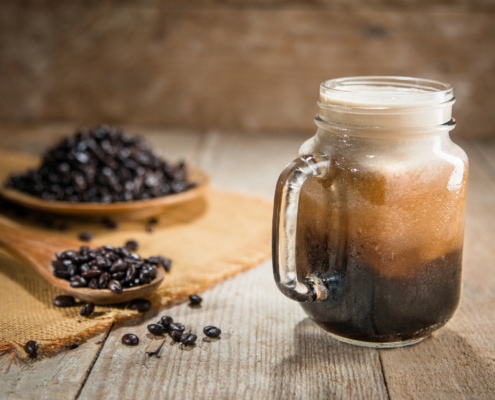 https://www.siamhillscoffee.com/wp-content/uploads/Nitro-Coffee-or-Regular-Coffee-Which-is-Better-–-1.jpg
1414
2121
Siamhillscoffee
https://www.siamhillscoffee.com/wp-content/uploads/coffee-logo.png
Siamhillscoffee2021-04-25 11:01:372021-04-25 11:01:37Nitro Coffee or Regular Coffee – Which is Better –
https://www.siamhillscoffee.com/wp-content/uploads/Nitro-Coffee-or-Regular-Coffee-Which-is-Better-–-1.jpg
1414
2121
Siamhillscoffee
https://www.siamhillscoffee.com/wp-content/uploads/coffee-logo.png
Siamhillscoffee2021-04-25 11:01:372021-04-25 11:01:37Nitro Coffee or Regular Coffee – Which is Better –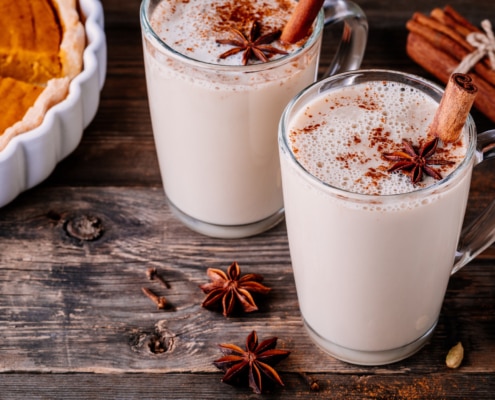 https://www.siamhillscoffee.com/wp-content/uploads/What-is-a-Dirty-Chai-or-Chai-Tea-Latte-–-A-Complete-Overview-–-1.jpg
1414
2121
Siamhillscoffee
https://www.siamhillscoffee.com/wp-content/uploads/coffee-logo.png
Siamhillscoffee2021-04-03 03:00:442021-04-03 03:00:44What is a Dirty Chai or Chai Tea Latte – A Complete Overview –
https://www.siamhillscoffee.com/wp-content/uploads/What-is-a-Dirty-Chai-or-Chai-Tea-Latte-–-A-Complete-Overview-–-1.jpg
1414
2121
Siamhillscoffee
https://www.siamhillscoffee.com/wp-content/uploads/coffee-logo.png
Siamhillscoffee2021-04-03 03:00:442021-04-03 03:00:44What is a Dirty Chai or Chai Tea Latte – A Complete Overview –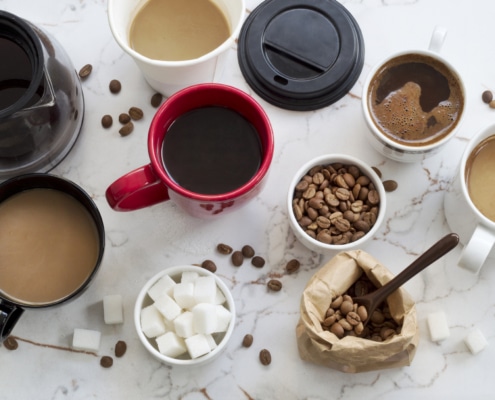 https://www.siamhillscoffee.com/wp-content/uploads/Filter-Coffee-and-Espresso-–-What-is-the-Difference-–-1.jpg
1397
2146
Siamhillscoffee
https://www.siamhillscoffee.com/wp-content/uploads/coffee-logo.png
Siamhillscoffee2021-04-03 02:55:042021-04-03 02:55:04Filter Coffee and Espresso – What is the Difference? –
https://www.siamhillscoffee.com/wp-content/uploads/Filter-Coffee-and-Espresso-–-What-is-the-Difference-–-1.jpg
1397
2146
Siamhillscoffee
https://www.siamhillscoffee.com/wp-content/uploads/coffee-logo.png
Siamhillscoffee2021-04-03 02:55:042021-04-03 02:55:04Filter Coffee and Espresso – What is the Difference? –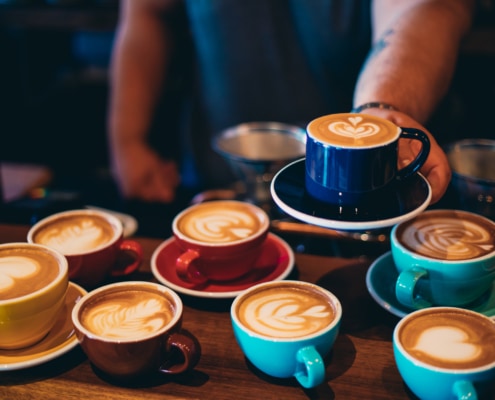 https://www.siamhillscoffee.com/wp-content/uploads/Cafe-au-Lait-and-Latte-–-Whats-The-Difference-–-1.jpg
1414
2121
Siamhillscoffee
https://www.siamhillscoffee.com/wp-content/uploads/coffee-logo.png
Siamhillscoffee2021-04-03 02:50:222021-04-03 02:50:22Café au Lait and Latte – What’s The Difference –
https://www.siamhillscoffee.com/wp-content/uploads/Cafe-au-Lait-and-Latte-–-Whats-The-Difference-–-1.jpg
1414
2121
Siamhillscoffee
https://www.siamhillscoffee.com/wp-content/uploads/coffee-logo.png
Siamhillscoffee2021-04-03 02:50:222021-04-03 02:50:22Café au Lait and Latte – What’s The Difference –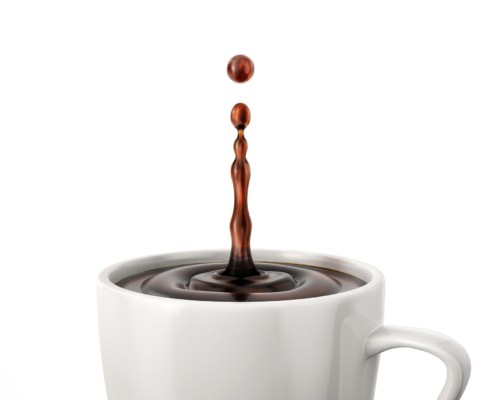 https://www.siamhillscoffee.com/wp-content/uploads/What-is-Red-Eye-Coffee-–-Everything-You-Need-to-Know-About-This-Eye-Opener-–-1.jpg
1414
2121
Siamhillscoffee
https://www.siamhillscoffee.com/wp-content/uploads/coffee-logo.png
Siamhillscoffee2021-03-21 04:01:332021-03-21 04:01:33What is Red Eye Coffee – Everything You Need to Know About This Eye-Opener –
https://www.siamhillscoffee.com/wp-content/uploads/What-is-Red-Eye-Coffee-–-Everything-You-Need-to-Know-About-This-Eye-Opener-–-1.jpg
1414
2121
Siamhillscoffee
https://www.siamhillscoffee.com/wp-content/uploads/coffee-logo.png
Siamhillscoffee2021-03-21 04:01:332021-03-21 04:01:33What is Red Eye Coffee – Everything You Need to Know About This Eye-Opener –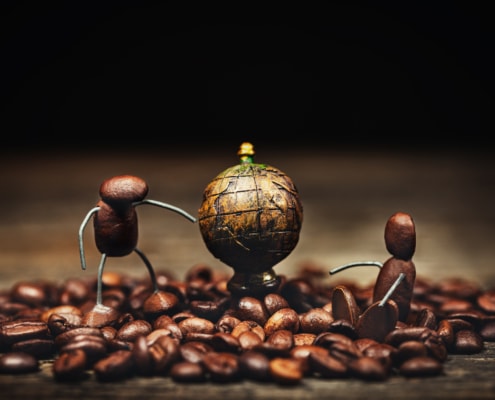 https://www.siamhillscoffee.com/wp-content/uploads/Top-10-Strangest-Coffee-Types-Beans-Special-Coffee-Experiences-–-1.jpg
1414
2121
Siamhillscoffee
https://www.siamhillscoffee.com/wp-content/uploads/coffee-logo.png
Siamhillscoffee2021-03-14 04:07:592021-03-14 04:07:59Top 10 Strangest Coffee Types & Beans – Special Coffee Experiences –
https://www.siamhillscoffee.com/wp-content/uploads/Top-10-Strangest-Coffee-Types-Beans-Special-Coffee-Experiences-–-1.jpg
1414
2121
Siamhillscoffee
https://www.siamhillscoffee.com/wp-content/uploads/coffee-logo.png
Siamhillscoffee2021-03-14 04:07:592021-03-14 04:07:59Top 10 Strangest Coffee Types & Beans – Special Coffee Experiences –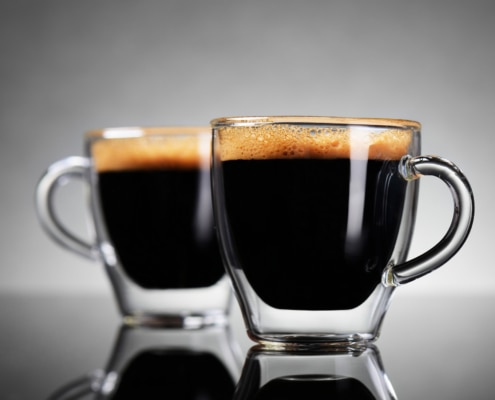 https://www.siamhillscoffee.com/wp-content/uploads/What-is-an-Espresso-–-A-Complete-Guide-–-1.jpg
1414
2119
Siamhillscoffee
https://www.siamhillscoffee.com/wp-content/uploads/coffee-logo.png
Siamhillscoffee2021-03-14 03:48:102021-03-14 03:48:10What is an Espresso? – A Complete Guide –
https://www.siamhillscoffee.com/wp-content/uploads/What-is-an-Espresso-–-A-Complete-Guide-–-1.jpg
1414
2119
Siamhillscoffee
https://www.siamhillscoffee.com/wp-content/uploads/coffee-logo.png
Siamhillscoffee2021-03-14 03:48:102021-03-14 03:48:10What is an Espresso? – A Complete Guide –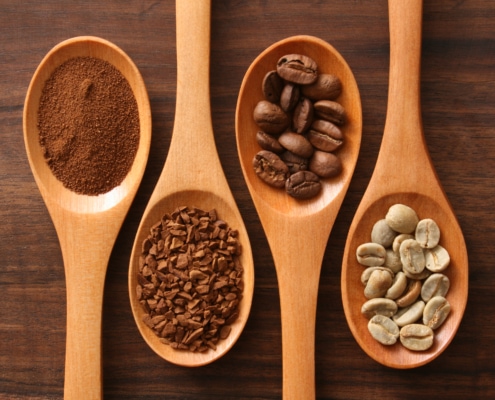 https://www.siamhillscoffee.com/wp-content/uploads/Top-6-Differences-Between-Ground-Coffee-And-Instant-Coffee-1-scaled.jpg
1920
2560
Siamhillscoffee
https://www.siamhillscoffee.com/wp-content/uploads/coffee-logo.png
Siamhillscoffee2021-03-14 03:40:432021-03-14 03:40:43Top 6 Differences Between Ground Coffee And Instant Coffee
https://www.siamhillscoffee.com/wp-content/uploads/Top-6-Differences-Between-Ground-Coffee-And-Instant-Coffee-1-scaled.jpg
1920
2560
Siamhillscoffee
https://www.siamhillscoffee.com/wp-content/uploads/coffee-logo.png
Siamhillscoffee2021-03-14 03:40:432021-03-14 03:40:43Top 6 Differences Between Ground Coffee And Instant Coffee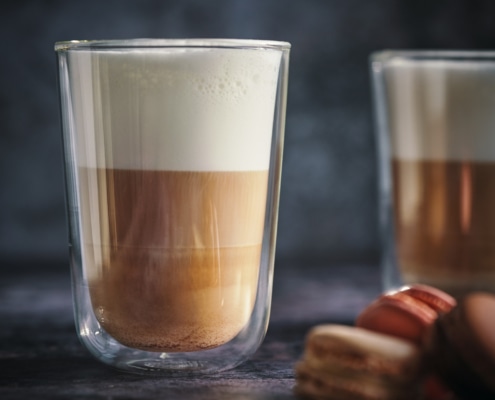 https://www.siamhillscoffee.com/wp-content/uploads/What-is-a-Cafe-Latte-–-A-Complete-Guide-–-1.jpg
1414
2120
Siamhillscoffee
https://www.siamhillscoffee.com/wp-content/uploads/coffee-logo.png
Siamhillscoffee2021-03-14 03:25:172021-03-14 03:25:17What is a Café Latte? – A Complete Guide –
https://www.siamhillscoffee.com/wp-content/uploads/What-is-a-Cafe-Latte-–-A-Complete-Guide-–-1.jpg
1414
2120
Siamhillscoffee
https://www.siamhillscoffee.com/wp-content/uploads/coffee-logo.png
Siamhillscoffee2021-03-14 03:25:172021-03-14 03:25:17What is a Café Latte? – A Complete Guide –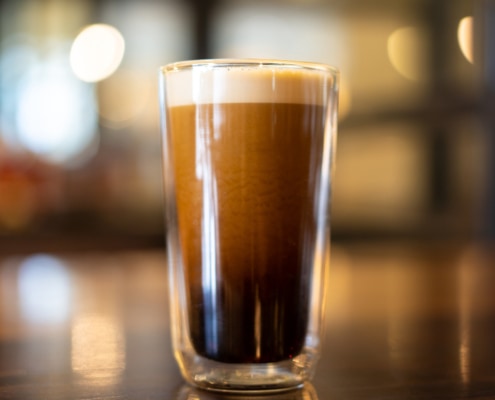 https://www.siamhillscoffee.com/wp-content/uploads/Beer-Coffee-Everybodys-Dream-Come-True-–-1.jpg
1414
2121
Siamhillscoffee
https://www.siamhillscoffee.com/wp-content/uploads/coffee-logo.png
Siamhillscoffee2021-03-14 03:21:082021-03-14 03:21:08Beer Coffee – Everybody’s Dream Come True –
https://www.siamhillscoffee.com/wp-content/uploads/Beer-Coffee-Everybodys-Dream-Come-True-–-1.jpg
1414
2121
Siamhillscoffee
https://www.siamhillscoffee.com/wp-content/uploads/coffee-logo.png
Siamhillscoffee2021-03-14 03:21:082021-03-14 03:21:08Beer Coffee – Everybody’s Dream Come True –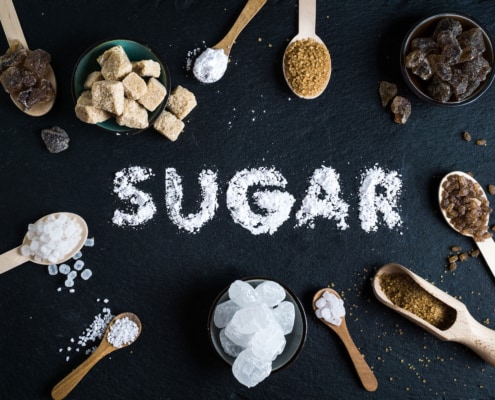 https://www.siamhillscoffee.com/wp-content/uploads/Natural-Coffee-Sweeteners-–-Best-Natural-Sugar-Substitutes-For-You-–-1.jpg
1502
1997
Siamhillscoffee
https://www.siamhillscoffee.com/wp-content/uploads/coffee-logo.png
Siamhillscoffee2021-02-20 05:43:182021-03-03 07:41:19Natural Coffee Sweeteners – Best Natural Sugar Substitutes For You –
https://www.siamhillscoffee.com/wp-content/uploads/Natural-Coffee-Sweeteners-–-Best-Natural-Sugar-Substitutes-For-You-–-1.jpg
1502
1997
Siamhillscoffee
https://www.siamhillscoffee.com/wp-content/uploads/coffee-logo.png
Siamhillscoffee2021-02-20 05:43:182021-03-03 07:41:19Natural Coffee Sweeteners – Best Natural Sugar Substitutes For You –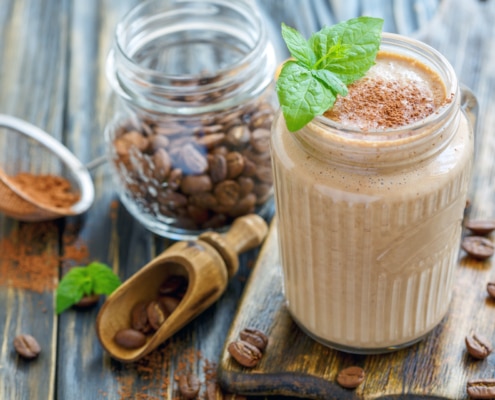 https://www.siamhillscoffee.com/wp-content/uploads/10-Best-Coffee-Smoothie-Recipes-–-Your-Perfectly-Delicious-Morning-Buzz-–-1-scaled.jpg
1707
2560
Siamhillscoffee
https://www.siamhillscoffee.com/wp-content/uploads/coffee-logo.png
Siamhillscoffee2021-02-20 05:32:312021-03-03 10:45:5410 Best Coffee Smoothie Recipes – Perfectly Delicious Morning Buzz –
https://www.siamhillscoffee.com/wp-content/uploads/10-Best-Coffee-Smoothie-Recipes-–-Your-Perfectly-Delicious-Morning-Buzz-–-1-scaled.jpg
1707
2560
Siamhillscoffee
https://www.siamhillscoffee.com/wp-content/uploads/coffee-logo.png
Siamhillscoffee2021-02-20 05:32:312021-03-03 10:45:5410 Best Coffee Smoothie Recipes – Perfectly Delicious Morning Buzz –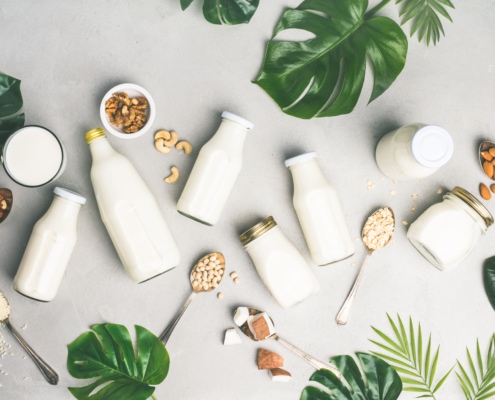 https://www.siamhillscoffee.com/wp-content/uploads/Great-Milk-Alternatives-–-Your-9-Best-Nondairy-Substitutes-for-Milk-–-1-scaled.jpg
1707
2560
Siamhillscoffee
https://www.siamhillscoffee.com/wp-content/uploads/coffee-logo.png
Siamhillscoffee2021-02-20 05:26:492021-03-03 10:47:18Great Milk Alternatives – Your 9 Best Nondairy Substitutes for Milk –
https://www.siamhillscoffee.com/wp-content/uploads/Great-Milk-Alternatives-–-Your-9-Best-Nondairy-Substitutes-for-Milk-–-1-scaled.jpg
1707
2560
Siamhillscoffee
https://www.siamhillscoffee.com/wp-content/uploads/coffee-logo.png
Siamhillscoffee2021-02-20 05:26:492021-03-03 10:47:18Great Milk Alternatives – Your 9 Best Nondairy Substitutes for Milk –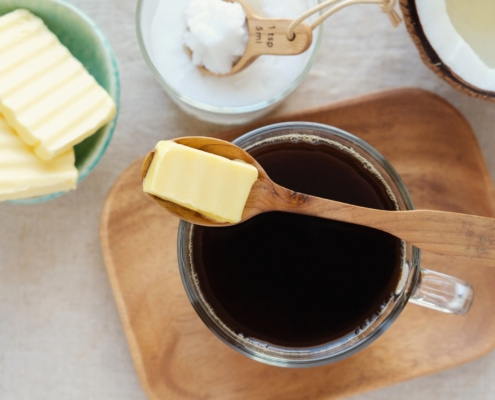 https://www.siamhillscoffee.com/wp-content/uploads/Butter-Coffee-Myths-versus-Facts-–-1.jpg
1414
2121
Siamhillscoffee
https://www.siamhillscoffee.com/wp-content/uploads/coffee-logo.png
Siamhillscoffee2021-02-20 05:14:182021-03-03 10:50:40Butter Coffee – Myths versus Facts –
https://www.siamhillscoffee.com/wp-content/uploads/Butter-Coffee-Myths-versus-Facts-–-1.jpg
1414
2121
Siamhillscoffee
https://www.siamhillscoffee.com/wp-content/uploads/coffee-logo.png
Siamhillscoffee2021-02-20 05:14:182021-03-03 10:50:40Butter Coffee – Myths versus Facts –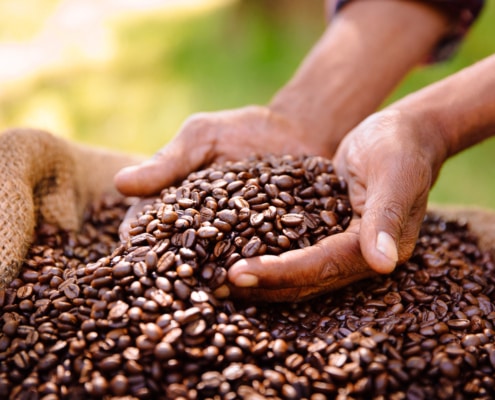 https://www.siamhillscoffee.com/wp-content/uploads/What-is-Specialty-Coffee-–-Everything-You-Need-to-Know-–-1-1.jpg
1414
2121
Siamhillscoffee
https://www.siamhillscoffee.com/wp-content/uploads/coffee-logo.png
Siamhillscoffee2021-02-20 05:10:372021-03-03 10:51:58What is Specialty Coffee? – Everything You Need to Know –
https://www.siamhillscoffee.com/wp-content/uploads/What-is-Specialty-Coffee-–-Everything-You-Need-to-Know-–-1-1.jpg
1414
2121
Siamhillscoffee
https://www.siamhillscoffee.com/wp-content/uploads/coffee-logo.png
Siamhillscoffee2021-02-20 05:10:372021-03-03 10:51:58What is Specialty Coffee? – Everything You Need to Know –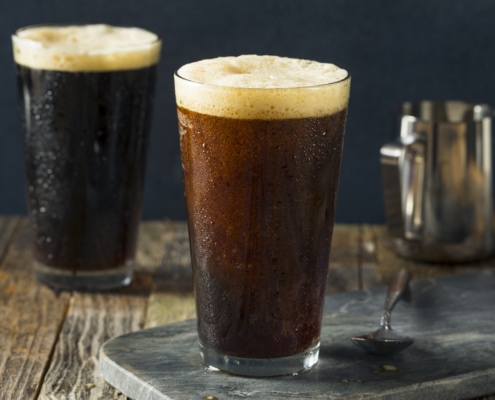 https://www.siamhillscoffee.com/wp-content/uploads/Nitro-Coffee-The-New-Big-Coffee-Trend-–-1.jpg
1414
2121
Siamhillscoffee
https://www.siamhillscoffee.com/wp-content/uploads/coffee-logo.png
Siamhillscoffee2021-02-20 05:03:032021-03-03 10:53:11Nitro Coffee – The New Big Coffee Trend –
https://www.siamhillscoffee.com/wp-content/uploads/Nitro-Coffee-The-New-Big-Coffee-Trend-–-1.jpg
1414
2121
Siamhillscoffee
https://www.siamhillscoffee.com/wp-content/uploads/coffee-logo.png
Siamhillscoffee2021-02-20 05:03:032021-03-03 10:53:11Nitro Coffee – The New Big Coffee Trend –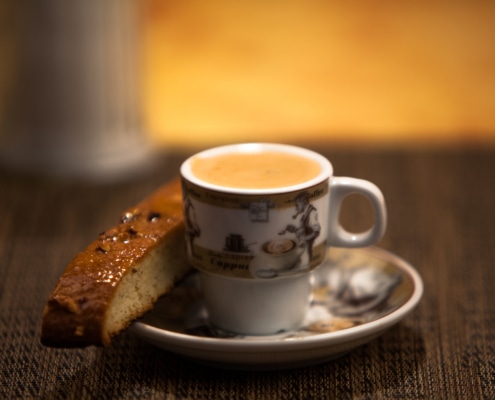 https://www.siamhillscoffee.com/wp-content/uploads/What-is-a-Cafe-Cubano-–-A-Complete-Guide-–-1.jpg
1414
2121
Siamhillscoffee
https://www.siamhillscoffee.com/wp-content/uploads/coffee-logo.png
Siamhillscoffee2021-02-20 04:57:432021-03-03 10:54:47What is a Cafe Cubano – A Complete Guide –
https://www.siamhillscoffee.com/wp-content/uploads/What-is-a-Cafe-Cubano-–-A-Complete-Guide-–-1.jpg
1414
2121
Siamhillscoffee
https://www.siamhillscoffee.com/wp-content/uploads/coffee-logo.png
Siamhillscoffee2021-02-20 04:57:432021-03-03 10:54:47What is a Cafe Cubano – A Complete Guide – https://www.siamhillscoffee.com/wp-content/uploads/Espresso-and-Coffee-–-Whats-the-Difference-–-1.jpg
1414
2121
Siamhillscoffee
https://www.siamhillscoffee.com/wp-content/uploads/coffee-logo.png
Siamhillscoffee2021-02-20 04:52:232021-03-03 10:56:00Espresso and Coffee – What’s the Difference? –
https://www.siamhillscoffee.com/wp-content/uploads/Espresso-and-Coffee-–-Whats-the-Difference-–-1.jpg
1414
2121
Siamhillscoffee
https://www.siamhillscoffee.com/wp-content/uploads/coffee-logo.png
Siamhillscoffee2021-02-20 04:52:232021-03-03 10:56:00Espresso and Coffee – What’s the Difference? – https://www.siamhillscoffee.com/wp-content/uploads/What-is-a-Cortado-–-A-Complete-Overview-–-1-scaled.jpg
1707
2560
Siamhillscoffee
https://www.siamhillscoffee.com/wp-content/uploads/coffee-logo.png
Siamhillscoffee2021-02-12 08:02:382021-03-03 11:00:15What is a Cortado? – A Complete Overview –
https://www.siamhillscoffee.com/wp-content/uploads/What-is-a-Cortado-–-A-Complete-Overview-–-1-scaled.jpg
1707
2560
Siamhillscoffee
https://www.siamhillscoffee.com/wp-content/uploads/coffee-logo.png
Siamhillscoffee2021-02-12 08:02:382021-03-03 11:00:15What is a Cortado? – A Complete Overview – https://www.siamhillscoffee.com/wp-content/uploads/Decaf-Coffee-–-Is-Decaffeinated-Coffee-Good-or-Bad-–-1.jpg
1415
2120
Siamhillscoffee
https://www.siamhillscoffee.com/wp-content/uploads/coffee-logo.png
Siamhillscoffee2021-02-12 07:57:572021-03-03 11:01:42Decaf Coffee – Is Decaffeinated Coffee Good or Bad? –
https://www.siamhillscoffee.com/wp-content/uploads/Decaf-Coffee-–-Is-Decaffeinated-Coffee-Good-or-Bad-–-1.jpg
1415
2120
Siamhillscoffee
https://www.siamhillscoffee.com/wp-content/uploads/coffee-logo.png
Siamhillscoffee2021-02-12 07:57:572021-03-03 11:01:42Decaf Coffee – Is Decaffeinated Coffee Good or Bad? –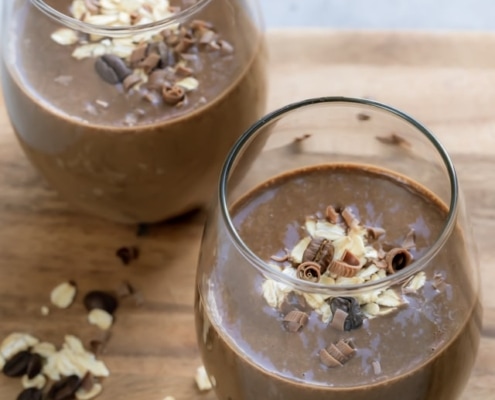 https://www.siamhillscoffee.com/wp-content/uploads/10-Best-Coffee-Protein-Shakes-–-Make-Your-Morning-Better-–-1.jpg
960
640
Siamhillscoffee
https://www.siamhillscoffee.com/wp-content/uploads/coffee-logo.png
Siamhillscoffee2021-02-12 07:48:282021-03-03 11:04:1910 Best Coffee Protein Shakes – Make Your Morning Better –
https://www.siamhillscoffee.com/wp-content/uploads/10-Best-Coffee-Protein-Shakes-–-Make-Your-Morning-Better-–-1.jpg
960
640
Siamhillscoffee
https://www.siamhillscoffee.com/wp-content/uploads/coffee-logo.png
Siamhillscoffee2021-02-12 07:48:282021-03-03 11:04:1910 Best Coffee Protein Shakes – Make Your Morning Better –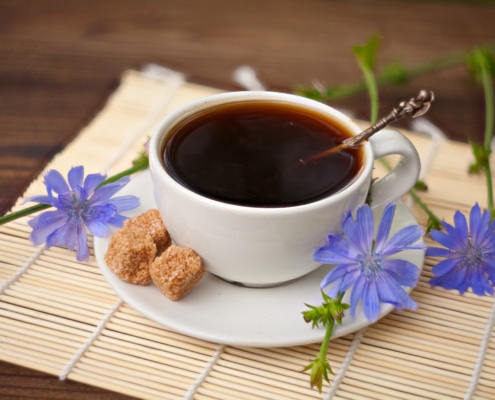 https://www.siamhillscoffee.com/wp-content/uploads/What-is-Chicory-Coffee-–-A-Healthy-Alternative-to-Coffee-or-Not-–-1-scaled.jpg
1747
2560
Siamhillscoffee
https://www.siamhillscoffee.com/wp-content/uploads/coffee-logo.png
Siamhillscoffee2021-02-12 07:37:062021-03-03 11:06:59What is Chicory Coffee? – A Healthy Alternative to Coffee or Not –
https://www.siamhillscoffee.com/wp-content/uploads/What-is-Chicory-Coffee-–-A-Healthy-Alternative-to-Coffee-or-Not-–-1-scaled.jpg
1747
2560
Siamhillscoffee
https://www.siamhillscoffee.com/wp-content/uploads/coffee-logo.png
Siamhillscoffee2021-02-12 07:37:062021-03-03 11:06:59What is Chicory Coffee? – A Healthy Alternative to Coffee or Not –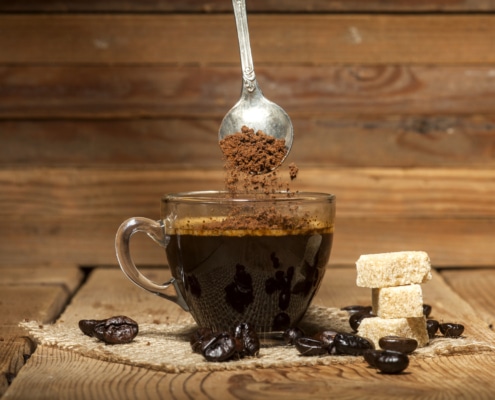 https://www.siamhillscoffee.com/wp-content/uploads/Instant-Coffee-and-Ground-Coffee-–-Which-is-Better-–-1.jpg
1250
2399
Siamhillscoffee
https://www.siamhillscoffee.com/wp-content/uploads/coffee-logo.png
Siamhillscoffee2021-02-12 07:27:432021-03-03 11:09:42Instant Coffee and Ground Coffee – Which is Better? –
https://www.siamhillscoffee.com/wp-content/uploads/Instant-Coffee-and-Ground-Coffee-–-Which-is-Better-–-1.jpg
1250
2399
Siamhillscoffee
https://www.siamhillscoffee.com/wp-content/uploads/coffee-logo.png
Siamhillscoffee2021-02-12 07:27:432021-03-03 11:09:42Instant Coffee and Ground Coffee – Which is Better? –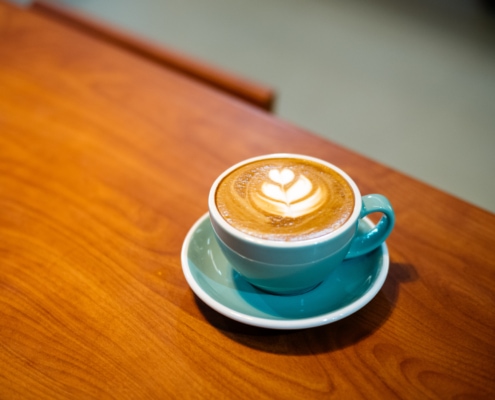 https://www.siamhillscoffee.com/wp-content/uploads/What-is-a-Flat-White-–-A-Complete-Guide-–-2.jpg
1414
2121
Siamhillscoffee
https://www.siamhillscoffee.com/wp-content/uploads/coffee-logo.png
Siamhillscoffee2021-02-12 07:21:312021-03-03 11:11:35What is a Flat White? – A Complete Guide –
https://www.siamhillscoffee.com/wp-content/uploads/What-is-a-Flat-White-–-A-Complete-Guide-–-2.jpg
1414
2121
Siamhillscoffee
https://www.siamhillscoffee.com/wp-content/uploads/coffee-logo.png
Siamhillscoffee2021-02-12 07:21:312021-03-03 11:11:35What is a Flat White? – A Complete Guide –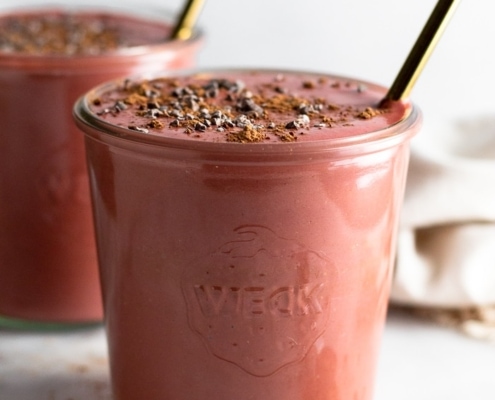 https://www.siamhillscoffee.com/wp-content/uploads/15-Great-Coffee-Breakfast-Smoothies-–-Simply-Delicious-Ways-to-Boost-Your-Morning-–14.jpg
1050
700
Siamhillscoffee
https://www.siamhillscoffee.com/wp-content/uploads/coffee-logo.png
Siamhillscoffee2021-02-12 06:52:492021-03-03 11:46:4615 Great Coffee Breakfast Smoothies – Delicious Ways to Boost Your Morning –
https://www.siamhillscoffee.com/wp-content/uploads/15-Great-Coffee-Breakfast-Smoothies-–-Simply-Delicious-Ways-to-Boost-Your-Morning-–14.jpg
1050
700
Siamhillscoffee
https://www.siamhillscoffee.com/wp-content/uploads/coffee-logo.png
Siamhillscoffee2021-02-12 06:52:492021-03-03 11:46:4615 Great Coffee Breakfast Smoothies – Delicious Ways to Boost Your Morning –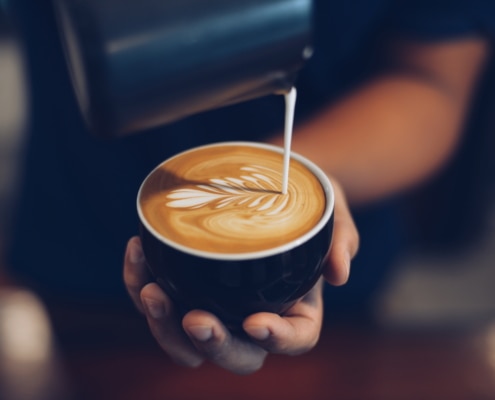 https://www.siamhillscoffee.com/wp-content/uploads/What-is-a-Cappuccino-–-A-Complete-Guide-–-1-scaled.jpg
1704
2560
Siamhillscoffee
https://www.siamhillscoffee.com/wp-content/uploads/coffee-logo.png
Siamhillscoffee2021-02-12 05:52:502021-03-03 11:51:41What is a Cappuccino? – A Complete Guide –
https://www.siamhillscoffee.com/wp-content/uploads/What-is-a-Cappuccino-–-A-Complete-Guide-–-1-scaled.jpg
1704
2560
Siamhillscoffee
https://www.siamhillscoffee.com/wp-content/uploads/coffee-logo.png
Siamhillscoffee2021-02-12 05:52:502021-03-03 11:51:41What is a Cappuccino? – A Complete Guide –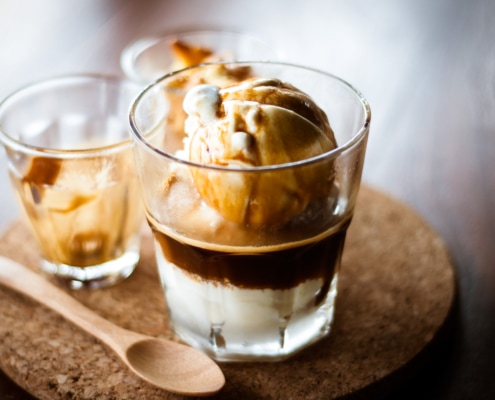 https://www.siamhillscoffee.com/wp-content/uploads/What-is-an-Affogato-–-A-Complete-Guide-–-1-scaled.jpg
1700
2560
Siamhillscoffee
https://www.siamhillscoffee.com/wp-content/uploads/coffee-logo.png
Siamhillscoffee2021-02-12 05:24:302021-03-03 11:58:41What is an Affogato? – A Complete Guide –
https://www.siamhillscoffee.com/wp-content/uploads/What-is-an-Affogato-–-A-Complete-Guide-–-1-scaled.jpg
1700
2560
Siamhillscoffee
https://www.siamhillscoffee.com/wp-content/uploads/coffee-logo.png
Siamhillscoffee2021-02-12 05:24:302021-03-03 11:58:41What is an Affogato? – A Complete Guide –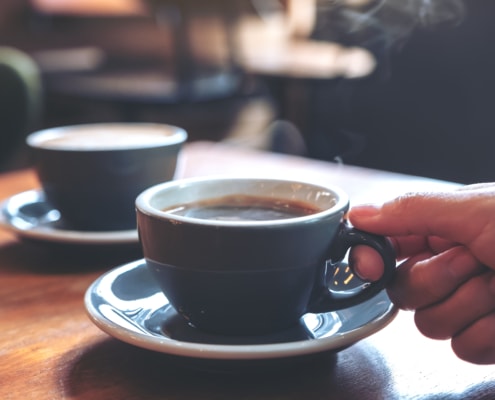 https://www.siamhillscoffee.com/wp-content/uploads/What-is-an-Americano-–-A-Complete-Guide-–-1-scaled.jpg
1707
2560
Siamhillscoffee
https://www.siamhillscoffee.com/wp-content/uploads/coffee-logo.png
Siamhillscoffee2021-02-12 05:20:142021-03-03 12:00:35What is an Americano – A Complete Guide –
https://www.siamhillscoffee.com/wp-content/uploads/What-is-an-Americano-–-A-Complete-Guide-–-1-scaled.jpg
1707
2560
Siamhillscoffee
https://www.siamhillscoffee.com/wp-content/uploads/coffee-logo.png
Siamhillscoffee2021-02-12 05:20:142021-03-03 12:00:35What is an Americano – A Complete Guide –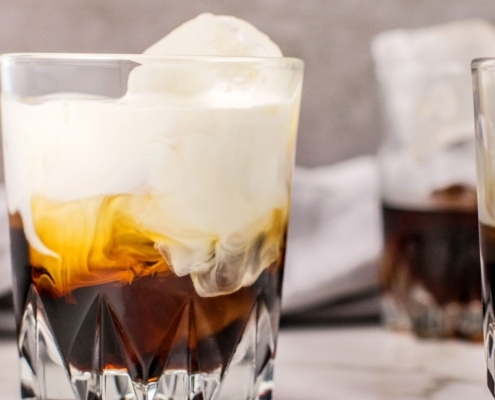 https://www.siamhillscoffee.com/wp-content/uploads/15-Best-Iced-Coffee-Recipes-–-Your-Perfectly-Refreshing-Boost-and-Buzz-–-5-scaled.jpg
1440
2560
Siamhillscoffee
https://www.siamhillscoffee.com/wp-content/uploads/coffee-logo.png
Siamhillscoffee2021-02-12 05:00:102021-03-03 12:05:3015 Best Iced Coffee Recipes – Your Perfectly Refreshing Boost and Buzz –
https://www.siamhillscoffee.com/wp-content/uploads/15-Best-Iced-Coffee-Recipes-–-Your-Perfectly-Refreshing-Boost-and-Buzz-–-5-scaled.jpg
1440
2560
Siamhillscoffee
https://www.siamhillscoffee.com/wp-content/uploads/coffee-logo.png
Siamhillscoffee2021-02-12 05:00:102021-03-03 12:05:3015 Best Iced Coffee Recipes – Your Perfectly Refreshing Boost and Buzz –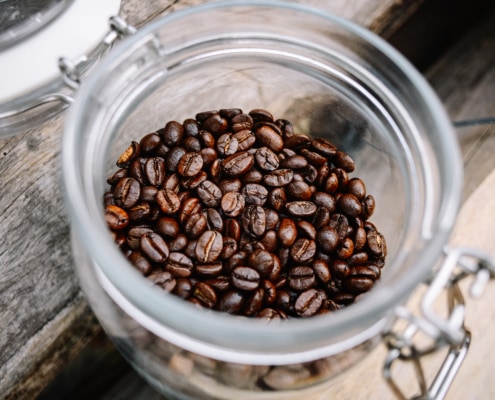 https://www.siamhillscoffee.com/wp-content/uploads/What-is-Robusta-Coffee-–Top-10-Robusta-vs.-Arabica-Differences-–-1-scaled.jpg
1696
2560
Siamhillscoffee
https://www.siamhillscoffee.com/wp-content/uploads/coffee-logo.png
Siamhillscoffee2021-02-12 04:50:162021-03-03 12:07:04What is Robusta Coffee? –Top 10 Robusta vs. Arabica Differences –
https://www.siamhillscoffee.com/wp-content/uploads/What-is-Robusta-Coffee-–Top-10-Robusta-vs.-Arabica-Differences-–-1-scaled.jpg
1696
2560
Siamhillscoffee
https://www.siamhillscoffee.com/wp-content/uploads/coffee-logo.png
Siamhillscoffee2021-02-12 04:50:162021-03-03 12:07:04What is Robusta Coffee? –Top 10 Robusta vs. Arabica Differences –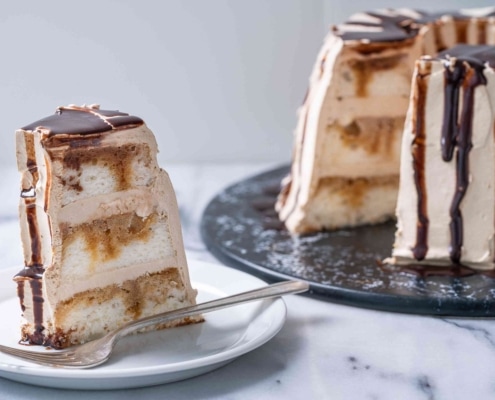 https://www.siamhillscoffee.com/wp-content/uploads/20-Best-Coffee-Dessert-Recipes-–-Your-Perfectly-Delicious-Coffee-Treat-–-1-scaled.jpg
1708
2560
Siamhillscoffee
https://www.siamhillscoffee.com/wp-content/uploads/coffee-logo.png
Siamhillscoffee2021-02-12 04:13:312021-03-03 12:17:1120 Best Coffee Dessert Recipes – Your Perfectly Delicious Coffee Treat –
https://www.siamhillscoffee.com/wp-content/uploads/20-Best-Coffee-Dessert-Recipes-–-Your-Perfectly-Delicious-Coffee-Treat-–-1-scaled.jpg
1708
2560
Siamhillscoffee
https://www.siamhillscoffee.com/wp-content/uploads/coffee-logo.png
Siamhillscoffee2021-02-12 04:13:312021-03-03 12:17:1120 Best Coffee Dessert Recipes – Your Perfectly Delicious Coffee Treat –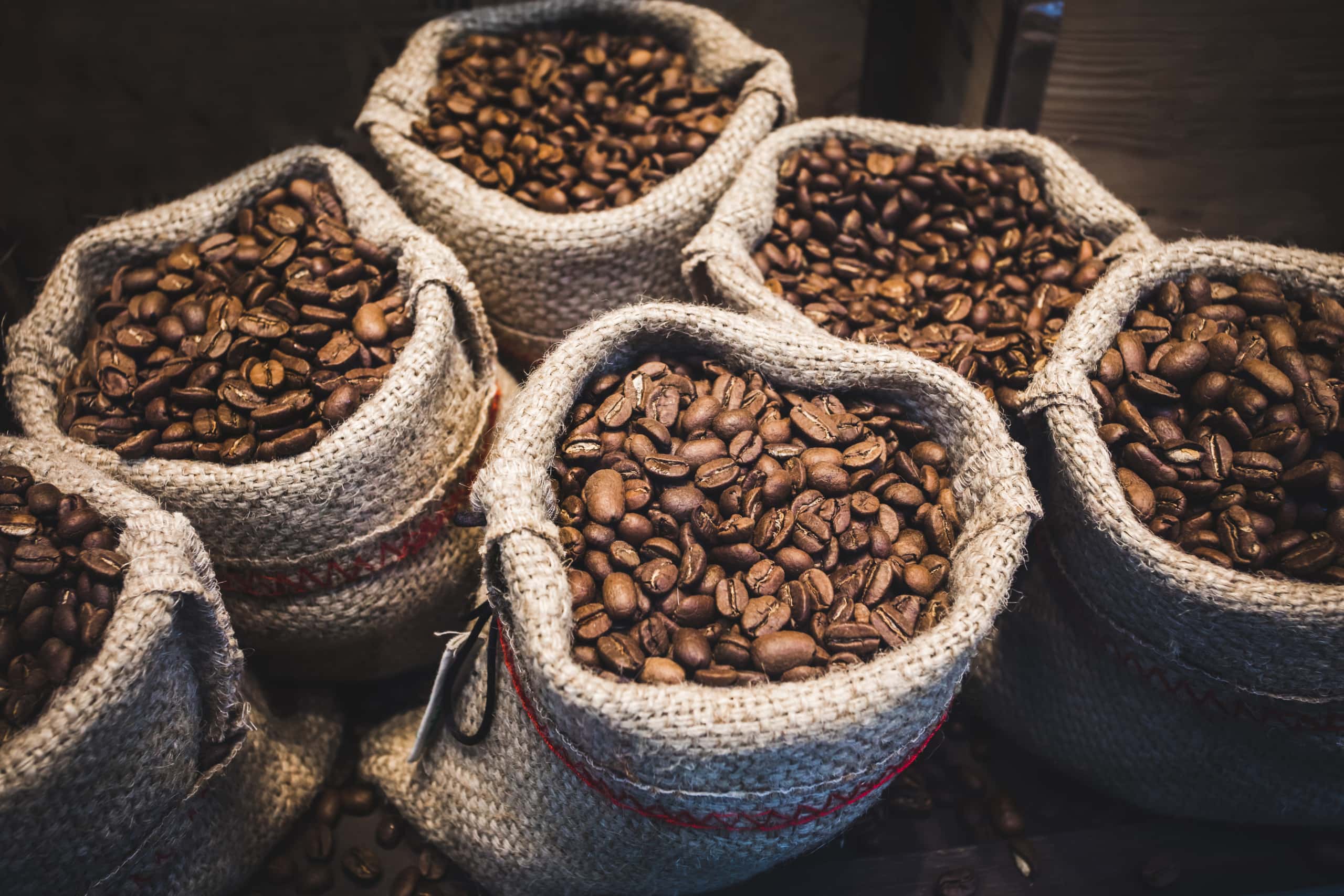 https://www.siamhillscoffee.com/wp-content/uploads/Arabica-and-Robusta-Coffee-–Top-10-Arabica-vs.-Robusta-Differences-–-1-scaled.jpg
1707
2560
Siamhillscoffee
https://www.siamhillscoffee.com/wp-content/uploads/coffee-logo.png
Siamhillscoffee2021-02-12 04:00:402021-03-03 12:21:42Arabica and Robusta Coffee –Top 10 Arabica vs. Robusta Differences –
https://www.siamhillscoffee.com/wp-content/uploads/Arabica-and-Robusta-Coffee-–Top-10-Arabica-vs.-Robusta-Differences-–-1-scaled.jpg
1707
2560
Siamhillscoffee
https://www.siamhillscoffee.com/wp-content/uploads/coffee-logo.png
Siamhillscoffee2021-02-12 04:00:402021-03-03 12:21:42Arabica and Robusta Coffee –Top 10 Arabica vs. Robusta Differences –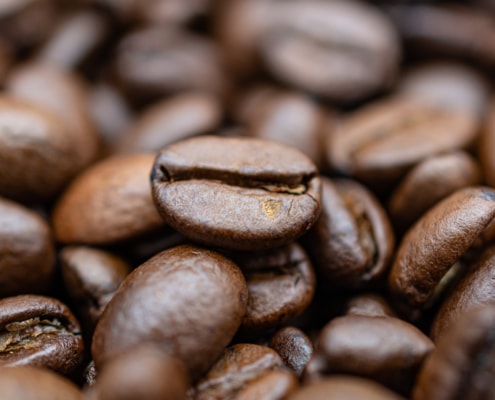 https://www.siamhillscoffee.com/wp-content/uploads/What-is-Arabica-Coffee-–Top-10-Arabica-vs.-Robusta-Differences-–-1-scaled.jpg
1820
2560
Siamhillscoffee
https://www.siamhillscoffee.com/wp-content/uploads/coffee-logo.png
Siamhillscoffee2021-02-12 03:36:062021-03-03 12:30:45What is Arabica Coffee? –Top 10 Arabica vs. Robusta Differences –
https://www.siamhillscoffee.com/wp-content/uploads/What-is-Arabica-Coffee-–Top-10-Arabica-vs.-Robusta-Differences-–-1-scaled.jpg
1820
2560
Siamhillscoffee
https://www.siamhillscoffee.com/wp-content/uploads/coffee-logo.png
Siamhillscoffee2021-02-12 03:36:062021-03-03 12:30:45What is Arabica Coffee? –Top 10 Arabica vs. Robusta Differences – https://www.siamhillscoffee.com/wp-content/uploads/Top-10-Best-Coffee-Drinks-in-the-World-Most-Consumed-Worldwide-–-1.jpg
1414
2121
Siamhillscoffee
https://www.siamhillscoffee.com/wp-content/uploads/coffee-logo.png
Siamhillscoffee2021-02-12 03:22:582021-03-03 12:33:14Top 10 Best Coffee Drinks in the World – Most Consumed Worldwide –
https://www.siamhillscoffee.com/wp-content/uploads/Top-10-Best-Coffee-Drinks-in-the-World-Most-Consumed-Worldwide-–-1.jpg
1414
2121
Siamhillscoffee
https://www.siamhillscoffee.com/wp-content/uploads/coffee-logo.png
Siamhillscoffee2021-02-12 03:22:582021-03-03 12:33:14Top 10 Best Coffee Drinks in the World – Most Consumed Worldwide –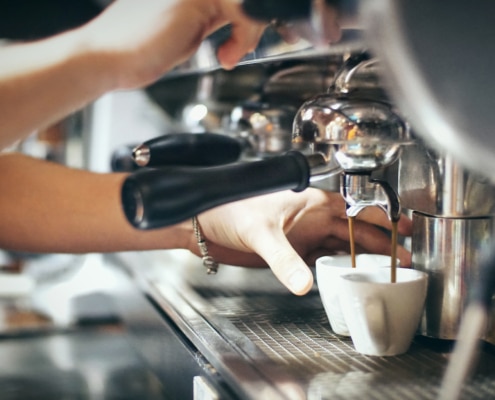 https://www.siamhillscoffee.com/wp-content/uploads/Top-10-Most-Popular-Espresso-Drinks-A-Complete-Overview-–-1.jpg
1392
2154
Siamhillscoffee
https://www.siamhillscoffee.com/wp-content/uploads/coffee-logo.png
Siamhillscoffee2021-02-12 03:15:472021-03-03 12:35:06Top 10 Most Popular Espresso Drinks – A Complete Overview –
https://www.siamhillscoffee.com/wp-content/uploads/Top-10-Most-Popular-Espresso-Drinks-A-Complete-Overview-–-1.jpg
1392
2154
Siamhillscoffee
https://www.siamhillscoffee.com/wp-content/uploads/coffee-logo.png
Siamhillscoffee2021-02-12 03:15:472021-03-03 12:35:06Top 10 Most Popular Espresso Drinks – A Complete Overview –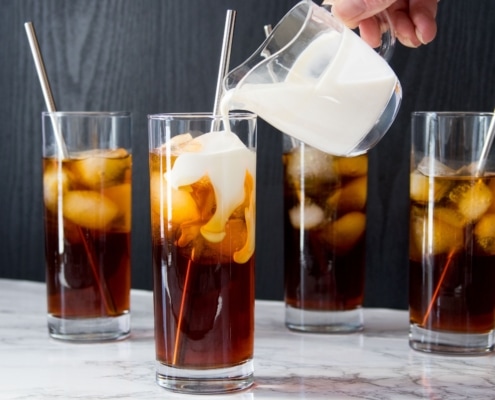 https://www.siamhillscoffee.com/wp-content/uploads/20-Best-Barista-Coffee-Recipes-–-Your-Perfectly-Delicious-Coffee-Treat-–-9-scaled.jpg
1707
2560
Siamhillscoffee
https://www.siamhillscoffee.com/wp-content/uploads/coffee-logo.png
Siamhillscoffee2021-02-12 02:51:302021-02-20 14:07:0420 Best Barista Coffee Recipes – Your Perfectly Delicious Coffee Treat –
https://www.siamhillscoffee.com/wp-content/uploads/20-Best-Barista-Coffee-Recipes-–-Your-Perfectly-Delicious-Coffee-Treat-–-9-scaled.jpg
1707
2560
Siamhillscoffee
https://www.siamhillscoffee.com/wp-content/uploads/coffee-logo.png
Siamhillscoffee2021-02-12 02:51:302021-02-20 14:07:0420 Best Barista Coffee Recipes – Your Perfectly Delicious Coffee Treat –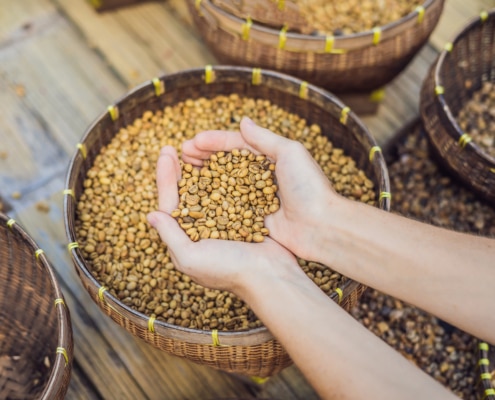 https://www.siamhillscoffee.com/wp-content/uploads/Kopi_Luwak_Coffee_The_Most_Expensive_Coffee_An_Honest_Opinion-4.jpg
1414
2121
Siamhillscoffee
https://www.siamhillscoffee.com/wp-content/uploads/coffee-logo.png
Siamhillscoffee2020-03-08 13:43:142021-03-03 13:34:22Kopi Luwak Coffee – The Most Expensive Coffee – An Honest Opinion
https://www.siamhillscoffee.com/wp-content/uploads/Kopi_Luwak_Coffee_The_Most_Expensive_Coffee_An_Honest_Opinion-4.jpg
1414
2121
Siamhillscoffee
https://www.siamhillscoffee.com/wp-content/uploads/coffee-logo.png
Siamhillscoffee2020-03-08 13:43:142021-03-03 13:34:22Kopi Luwak Coffee – The Most Expensive Coffee – An Honest Opinion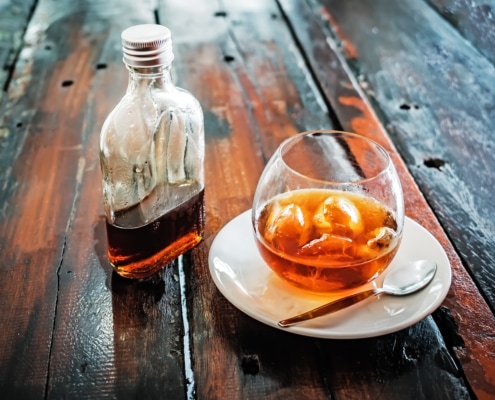 https://www.siamhillscoffee.com/wp-content/uploads/Cold_Brew_Coffee_An_Honest_Opinion_All_You_Need_To_Know_1.jpg
3144
4608
Siamhillscoffee
https://www.siamhillscoffee.com/wp-content/uploads/coffee-logo.png
Siamhillscoffee2019-11-06 05:01:152021-03-03 13:30:17Cold Brew Coffee – An Honest Opinion – All You Need to Know
https://www.siamhillscoffee.com/wp-content/uploads/Cold_Brew_Coffee_An_Honest_Opinion_All_You_Need_To_Know_1.jpg
3144
4608
Siamhillscoffee
https://www.siamhillscoffee.com/wp-content/uploads/coffee-logo.png
Siamhillscoffee2019-11-06 05:01:152021-03-03 13:30:17Cold Brew Coffee – An Honest Opinion – All You Need to Know
